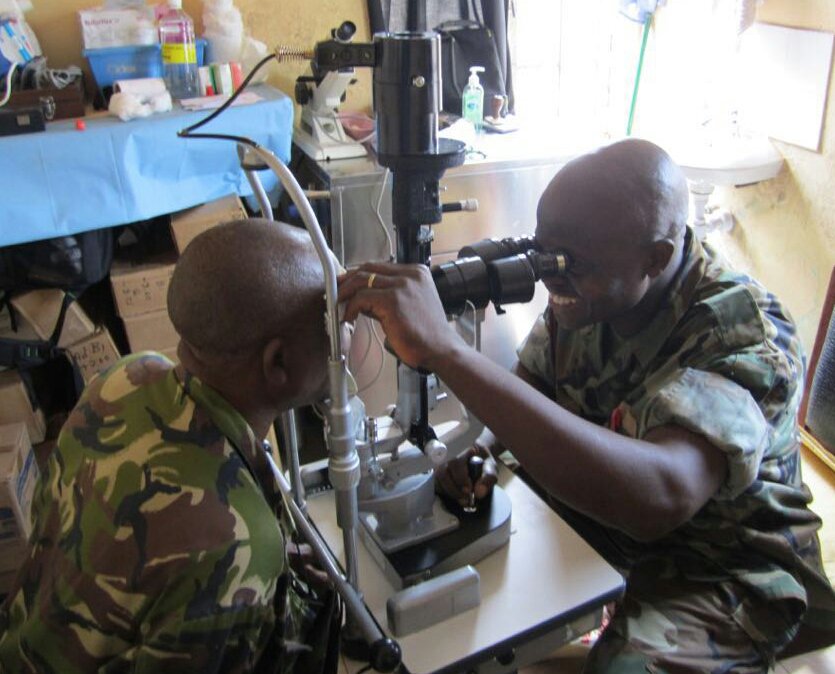Neurological, psychiatric symptoms persist in Ebola survivors
Researchers at the University of Liverpool discovered that a broad set of neurological and psychiatric symptoms persisted in Ebola virus survivors more than 1 year after the patients were discharged from the hospital.
Results from two related studies assessing the effects of post-Ebola syndrome (PES) were presented at ECCMID 2016.
“Post-Ebola syndrome is not going away, and we are seeing people now, 2 years later, still suffering from the aftereffects of this terrible disease,” Janet T. Scott, PhD, MRCP, clinical lecturer in pharmacology and infectious disease at the University of Liverpool and a researcher on both studies, said in a news release.
A wide range of symptoms
The worst Ebola outbreak in history began in December 2013 and killed more than 11,000 people before it was declared over in January. Most of the deaths occurred in Guinea, Liberia and Sierra Leone, which all have seen recent disease flare-ups.
According to Scott, there are more than 17,000 Ebola survivors in West Africa, including about 5,000 in Sierra Leone, where the research was conducted.
Among patient notes of 354 Ebola survivors, Scott and colleagues found 87 individuals who fit predetermined criteria: The patients were aged 16 years or older and had significant symptoms such as weakness, tremor, blindness, deafness, confusion, depression, psychosis and double vision. Forty-five of these patients were contacted, and 38 visited the clinic. The patients were mostly female (63%), and their median age was 34 years. They were hospitalized with Ebola for a median duration of 21 days, and the median length of time between their release and the screening clinic was 431 days. Forty-five percent of the patients reported loss of consciousness, and 18% experienced seizures during their acute phase of the disease.

Figure 1. Ophthalmology nurse Fayiah Momorie trains with a new slit lamp in Military Hospital 34, in Freetown, Sierra Leone.
Source: University of Liverpool
Scott and colleagues learned that 28 patients reported headaches — the most frequent neurological feature — and five had focal upper motor neuron weakness. Common psychiatric symptoms included insomnia, depression and anxiety.
“Our experience suggests that there is a need for tertiary-level neurological and psychiatric referral clinics and larger, case-controlled studies,” Scott and colleagues wrote. “Our data are limited by the challenges of contacting many patients from our selected group.”
Cataracts among diverse ocular complications
A more diverse range of eye complications are experienced by patients suffering from PES, according to the ophthalmology aspect of the study.
The researchers used a number of eye tests to evaluate 150 Ebola survivors who had vision complications, including panuveitis and also cataracts in younger Ebola survivors.
“The data in both sets of research support the need for larger, case-controlled studies,” Scott said in the release. “[Those with PES] deserve better treatment, so we will continue to research and provide hands-on support to ensure this happens.”
Long-term neurological problems observed
The results presented at ECCMID 2016 are supported by data from the Prevail III trial — a study of the natural history of Ebola — which indicated long-term neurological problems in a subcohort of 82 Ebola survivors from Liberia 6 months after their initial infection.
According to that study, most of the survivors experienced some type of neurological abnormality. The most common ongoing problems were weakness, headaches, memory loss, depressed mood, muscle pain and abnormal eye movement, the researchers said.
Neurologists at the NIH plan to follow up with the cohort every 6 months for several years to see if these issues improve, worsen, persist, or if they are related to something other than Ebola. Imaging studies and laboratory testing of cerebral spinal fluid from survivors also are planned.
– by Gerard Gallagher
References:
Billioux BJ, et al. P1.283. Presented at: American Academy of Neurology annual meeting; April 15-21; Vancouver, British Columbia.
Lado M, et al. Abstract 7564. Presented at: European Congress of Clinical Microbiology and Infectious Diseases; April 9-12, 2016; Amsterdam.
Steptoe P, et al. Abstract 7596. Presented at: European Congress of Clinical Microbiology and Infectious Diseases; April 9-12, 2016; Amsterdam.
Disclosure: Billioux reports no relevant financial disclosures. Infectious Disease News was unable to confirm relevant financial disclosures for Scott at the time of publication.

